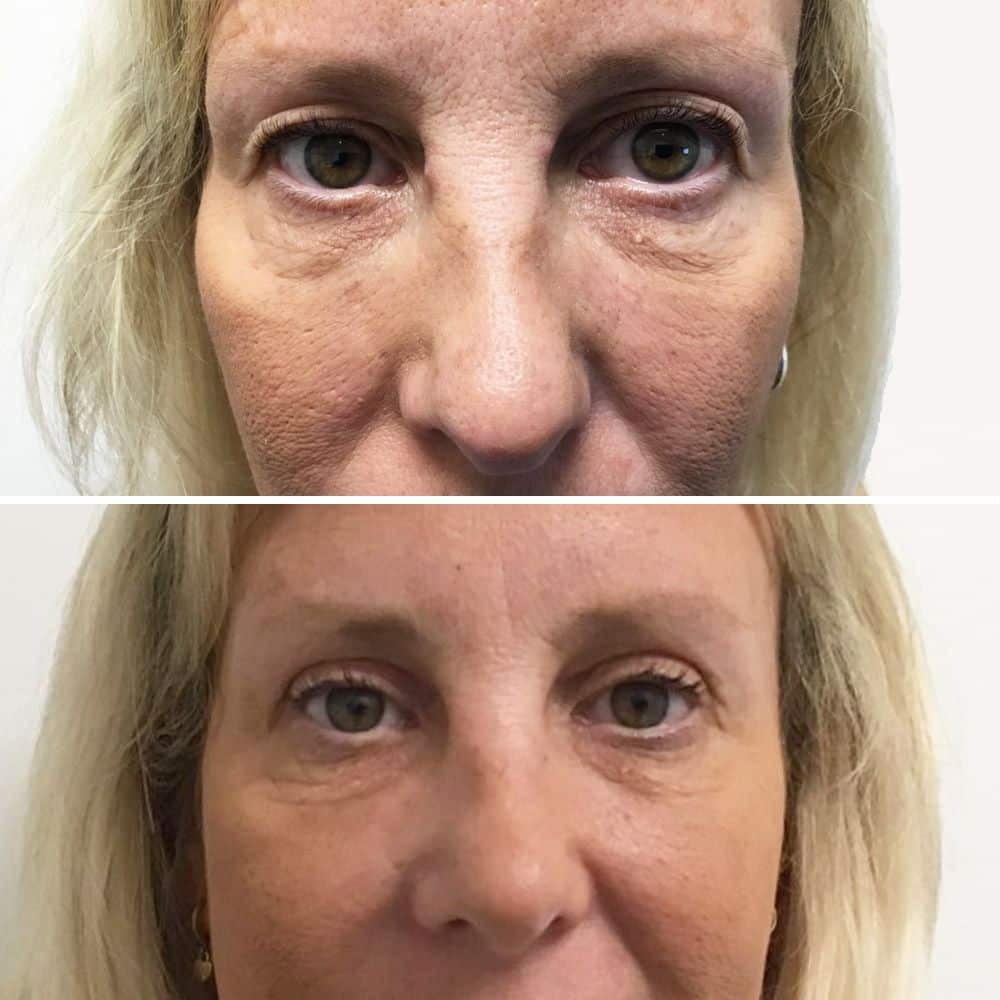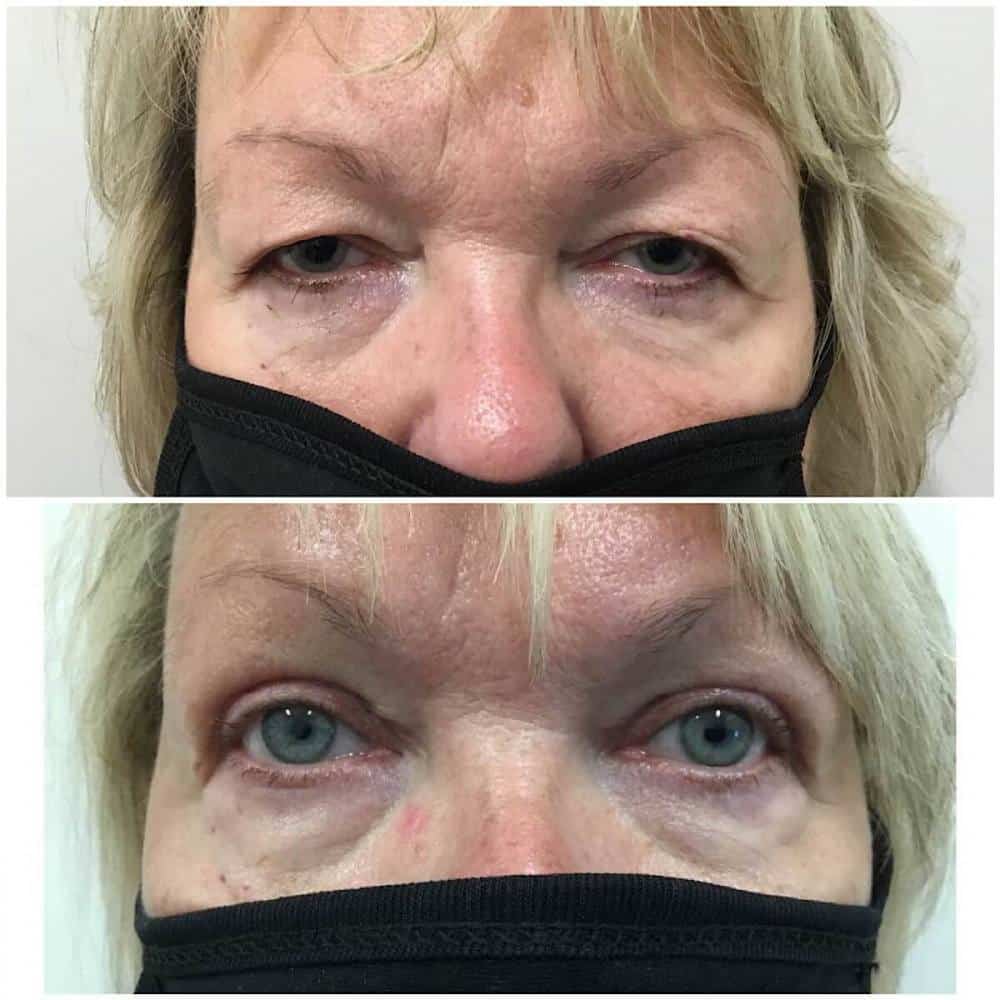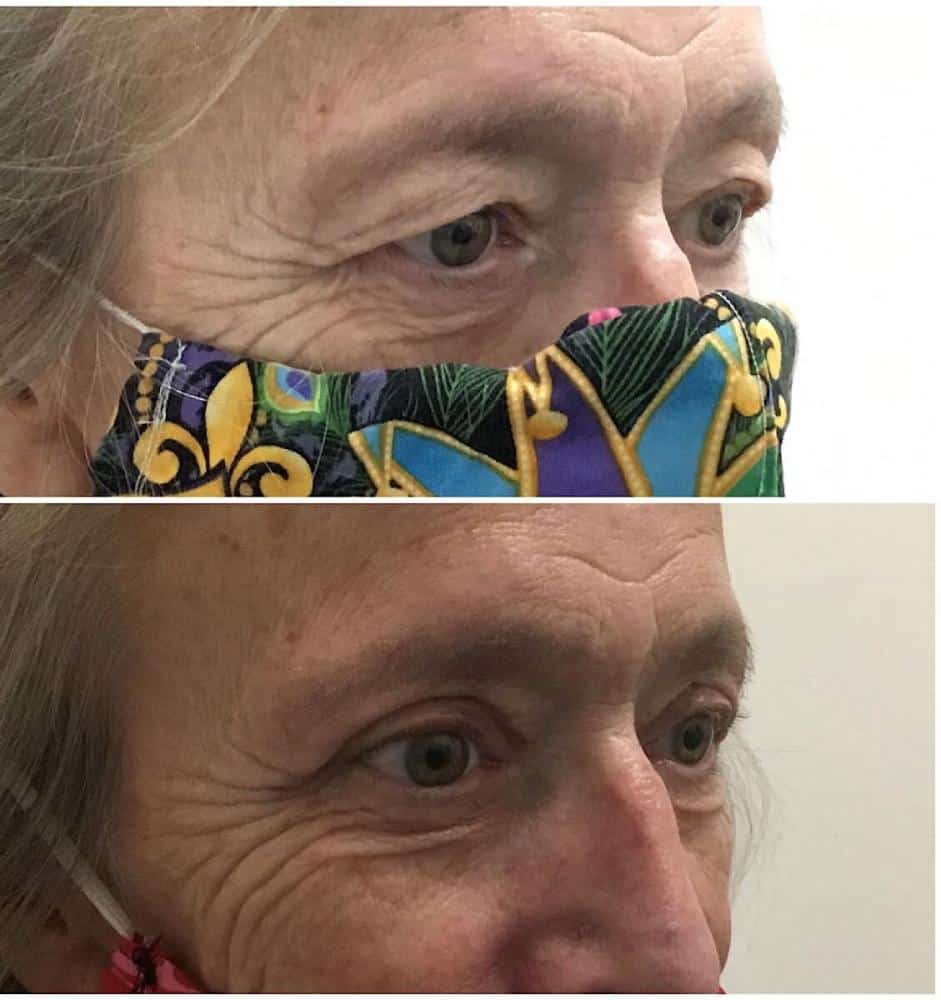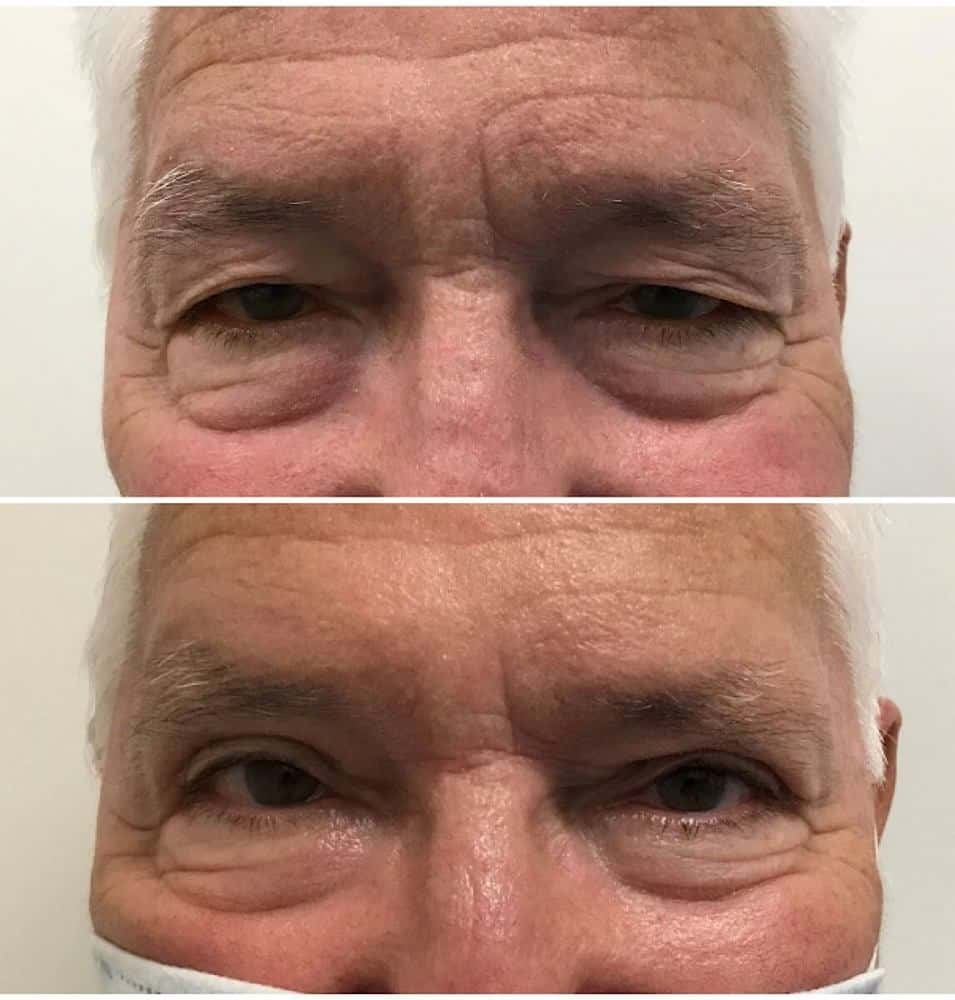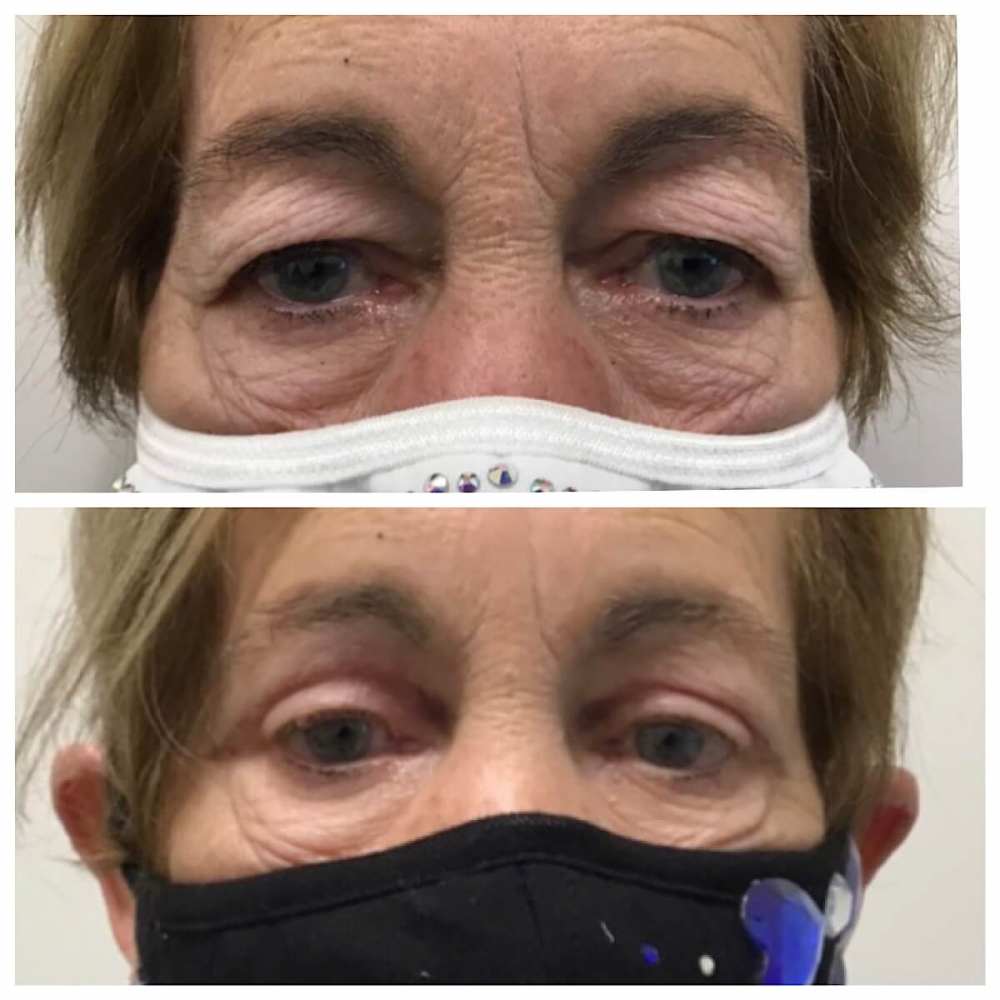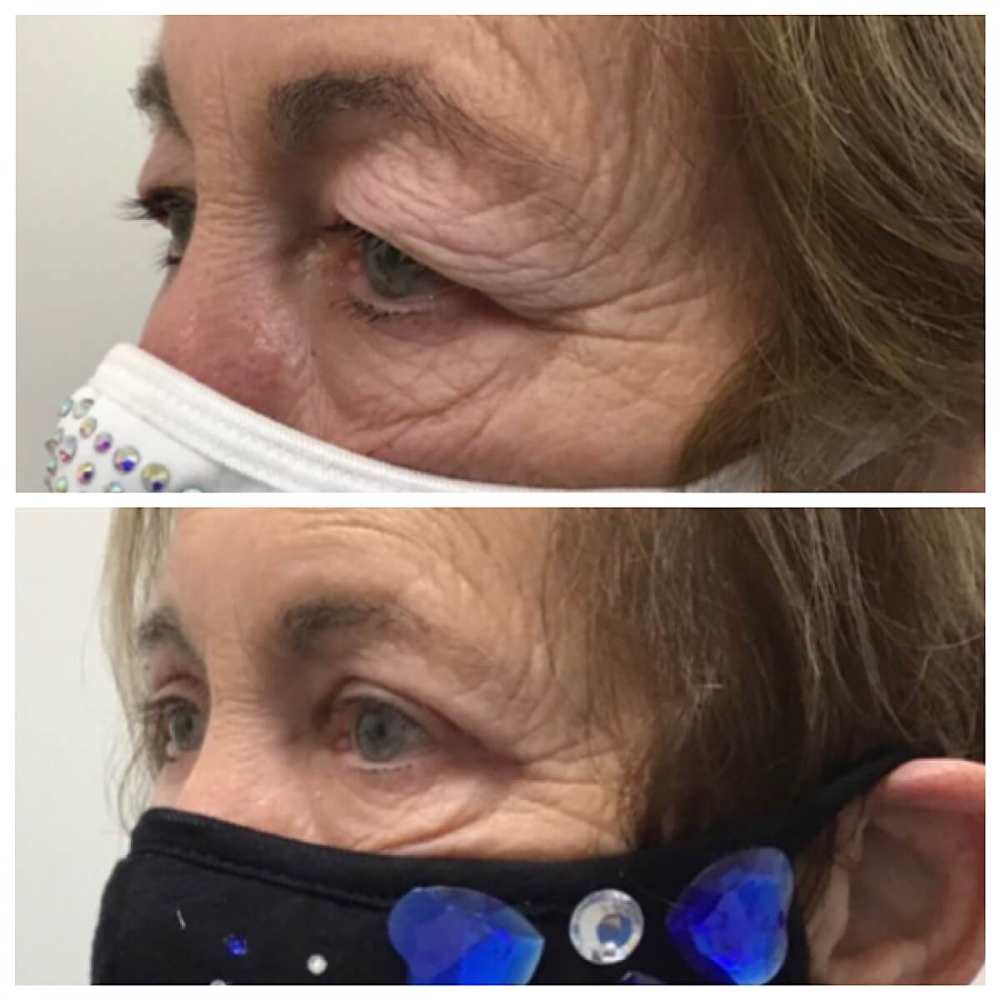Blepharoplasty Evaluations
Eyelid skin is thinner than most other skin on the face and is often the first to show signs of aging. The skin and muscles of your eyelids and eyebrows may sag, causing the excess skin on your upper eyelid to block the upper and outer parts of your peripheral vision. This excess skin can make it more difficult to check your blind spot while driving and may even cause headaches from constantly using the forehead muscles to raise the eyebrows and lids to see. You can also get more creases, folds, lines, and wrinkles on your forehead from chronic overuse. Other factors, such as smoking, sun damage, and wear and tear from blinking and rubbing also contribute to changes in the eyelid tissues and surrounding skin.
Once you have been evaluated and a baseline eye examination has been performed, special testing must be obtained to determine how significantly the sagging eyelid skin is affecting the upper and outer parts of your vision. A visual field test will be performed at a separate visit with eyelids down in their usual drooping state and repeated after the eyelids are taped up and out of the way. The two visual fields are then compared, and specific criteria must be met for the surgery to be covered by insurance. There must be a significant improvement in the upper and outer visual fields when the lids are taped up to demonstrate the lids are blocking the vision and to indicated surgery to remove the sagging skin will improve the vision. Photos will also be obtained from multiple angles to document the extent of lid and brow drooping. If the criteria for insurance is not met, the surgery will be considered cosmetic.
The best candidates for blepharoplasty are men and women with healthy facial tissue and muscles, and realistic expectations.
When patients have realistic expectations about the surgery and closely follow their doctor’s instructions for recovery, blepharoplasty can be a very successful and rewarding procedure.
Please give us a call at (239) 936-2020 for a blepharoplasty evaluation and find out if you would be a good candidate for the procedure.

